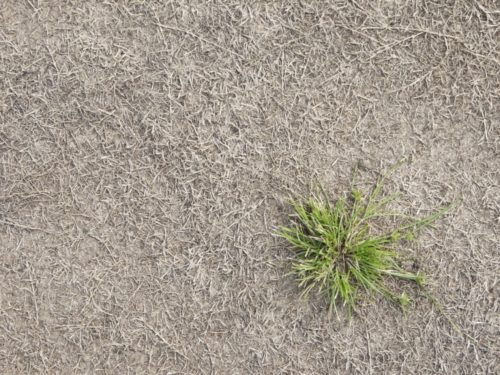 Image: No Ordinary Homestead
Image: No Ordinary Homestead
Lush green grass all year round is the ultimate goal, however, it is normal for the quality of your turf to ebb and flow with the changing seasons. As a result, it can be difficult to tell whether your lawn is dead and needs replacing or whether it can be revived with a little extra loving. There are some tell-tale signs your turf isn’t just going through a rough patch but that it’s on its last legs and understanding them is key to making an informed decision about the next steps in your lawn care routine.
Is my lawn dead or just dormant?
With the harsh weather conditions that we experience in Australia, you can expect your lawn to go through phases where it looks less than perfect. While crunchy, brown grass may look like a definitive sign that your lawn is dead, the grass has likely just entered a state of dormancy where the cells have shut down growth to prevent moisture loss. After a long period without rain, there is a good chance your lawn may just be lying dormant, simply waiting for good water.
Check the crown to tell if your grass is dormant
The best way to establish whether your lawn is dormant is to check the crown of the grass. Sitting just above the soil line at the base of the leaves, the crown of a healthy grass plant should be white. If the crown is brown and brittle, there is a good chance that your lawn is beyond repair.
My lawn feels spongy, not crunchy
While dry, crunchy grass can be often brought back to life with some extra care, a spongy lawn signifies that the root system has been affected meaning your lawn may actually be dead. Only the above-ground section of the grass plant will show signs that your lawn has gone into dormancy, so if your lawn feels spongy and soft, the roots of the plant could be diseased and your lawn is probably beyond repair. Spongy turf may also be a symptom of a lawn grub infestation. Read our blog on protecting your turf against lawn bugs to learn more.
If it pulls out of the soil easily, your lawn is dead
A lawn that is easily removed from the soil is another symptom that the root system of the grass has been compromised. Luckily there is a simple test to identify if this is the case.
The Tug Test
One method of testing whether your grass is dead is the simple tug test. Grab a section of brown grass and give it a good, hard tug. If it comes out with little to no resistance, it is likely that your turf has passed the point of no return and you’ll have to think about laying some fresh turf.
Your lawn may be dead if it wilts in the sun
Many varieties of turf in Australia are actually quite sturdy. If provided with sunlight and sufficient water, most species of turf can withstand plenty of sunlight and bounce back from harsh weather conditions. If you notice that your lawn is wilting in direct sunlight, it may be on death’s doorstep.
What to do if you’re lawn is dead
Once you’ve established that your lawn is resting in peace, your best course of action is often to cut your losses and lay some new turf. If you find that your lawn is consistently dying, you may want to test out a new variety more suited to your backyard conditions. Speak to our turf specialist today for more information on lawn varieties and their specific needs.
In most cases, your lawn can be revived with a little expert advice and a lot of TLC. However, understanding the signs that your lawn is dead and can save you investing time and money into a lawn that isn’t long for this world. Need a quote for some new turf? Contact the Go Turf team today through our website or on 1300 781 175.
